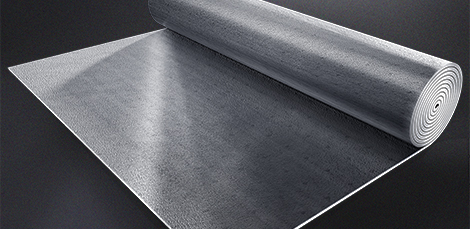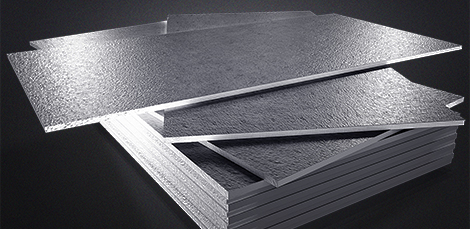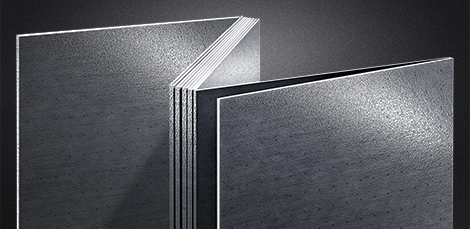Save Energy and Reduce Costs
Build Beyond the Minimum
The American society of heating, Refrigerating and Air Conditioning Engineers (ASHRAE) has raised the bar for energy performance. The minimum insulation R- Value in Standard 90.1 – the nation's model energy code for commercial buildings has been increased by 33% for new roof and wall construction.
R-20 is the new minimum required E-Value. That means 4.75 inches of expanded polystyrene is the minimum acceptable level of insulation in new commercial buildings.
Standard 90.1 addresses building envelope requirements of commercial buildings, multi-unit high–rise residential buildings and semi conditioned spaces such as warehouses.
ASHRAE'S progressive action will improve the efficiency of the commercial building sector by conserving energy and reducing both carbon emissions and operating costs for owners,'
Standard 90.1 is not only part of the Energy Policy Act but is also the standard for USGBC's LEED and is recognized in both the International Building Code and the International Energy Conservation Code.
Don't settle for R-20. Build beyond the code and reduce your energy costs.
For more details visit www.ashrae.org
"Building Beyond the Code"
Thermal 3Ht Insulation and LEED
The U.S. Green Building Council (USGBC) has developed a nationally accepted system to rate the design, construction and operation of buildings. The USGBC’s Leadership in Energy and Environmental Design (LEED) is a standard that recognizes the life-cycle cost of construction and helps to guide and distinguish high performance commercial and institutional projects. The LEED rating system allows designers and building owners to acquire credits by meeting certain conditions pertaining to the use of sustainable, energy-efficient and environmentally-friendly products and systems. Buildings can become LEED certified by achieving certain point levels. There are four levels of certification.
Using Thermal 3Ht Insulation products in building designs can assist in obtaining LEED credits in several categories.
Listed below are the categories where Thermal 3Ht Insulation products may assist in achieving LEED credits. A brief description of the credit is also included.
To access the Green Building Rating System for new Construction and Renovations, visit www.usgbc.org.
SUSTAINABLE SITES (SS CREDITS) SS Credit 7.2 – Heat Island Effect: Roof (1 point possible)
Purpose: Reduce the heat islands to minimize impact on microclimate and habitat. The credit requires the use of a reflective roofing material or the use of a roof garden.
Although this credit does not relate solely to insulation, Thermal 3Ht Insulation has reflective membranes and can be used in roof systems and in garden roof assemblies to help reduce the urban heat island effect.
ENERGY AND ATMOSPHERE (EA CREDITS) EA Credit 1 – Optimize Energy Performance (10 points possible)
Purpose: Reduce the negative environmental impact resulting from excessive energy use by demonstrating a measurable improvement in the building performance rating compared to the baseline building performance rating per ASHRAE/ESNA standard 90.1-2004 (without amendments) This credit encompasses the entire building.
An increase in the R-Value of Thermal 3Ht Insulation used in the roof, wall and below- grade systems of a project would contribute to this credit.
EA Credit 5 – Measurement and Verification (1 point Possible)
Purpose: Provide for the ongoing accountability of building energy consumption over time by developing and implementing a Measurement and Verification Plan.
Although this credit does not relate solely to insulation, proper R-value provided by Thermal 3Ht Insulation products will contribute to the overall energy savings and the subsequent accounting of building energy consumption.
MATERIALS & RESOURCES (MR CREDITS) MR Credit 2.1 & 2.2 - Construction Waste Management: Divert 50% or 75% From Disposal (2 points possible)
Purpose: Recycle and/or salvage at least 50% (1 point) or 75% (2 points) of non-hazardous construction and demolition debris.
Thermal 3Ht Insulation can receive and reuse uncontaminated polystyrene removed from rehabilitated buildings and the scrap generated on new construction projects.
MR Credit 3.1 & 3.2 – Materials Reuse: 5% or 10% (2 points possible)
Purpose: Use salvaged, refurbished or reused materials so the sum of these materials, based on cost, constitutes at least 5% (1 point) or 10% (2 points) of the total value of materials on the project to reduce demand for virgin material and minimizing generation of waste.
Thermal 3Ht Insulation roof insulation is suitable for and can be reused in new roof systems at the end of the original roof system’s life.
MR Credit 4.1 & 4.2 – Recycled Content 10% or 20% (2 points possible)
Purpose: Increase demand for building products that in corporate recycled content of at least 10% (1 point) or 20% (2 points) thereby reducing impacts resulting from extraction and processing of virgin materials.
Thermal 3Ht Insulation can provide products suitable for use in several different construction applications with up to a 25% pre-consumer recycled content.
MR credit 5.1 & 5.2 – Regional Materials (2 points possible-1 point for 10% & 2 points for 20%)
Purpose: Increase demand for building materials and products that are extracted and manufactured within the region, thereby supporting the use of indigenous resources and reducing the environmental impacts resulting from transportation. If only a fraction for a product or material is extracted harvested recovered and manufactured, locally, then only that percentage by weight shall contribute to the regional value.
Thermal 3Ht Insulation can provide products that include only components extracted, harvested or recovered, as well as manufactured, within 500 miles of the project site for minimum of 10% (based on cost) of the total materials valued.



